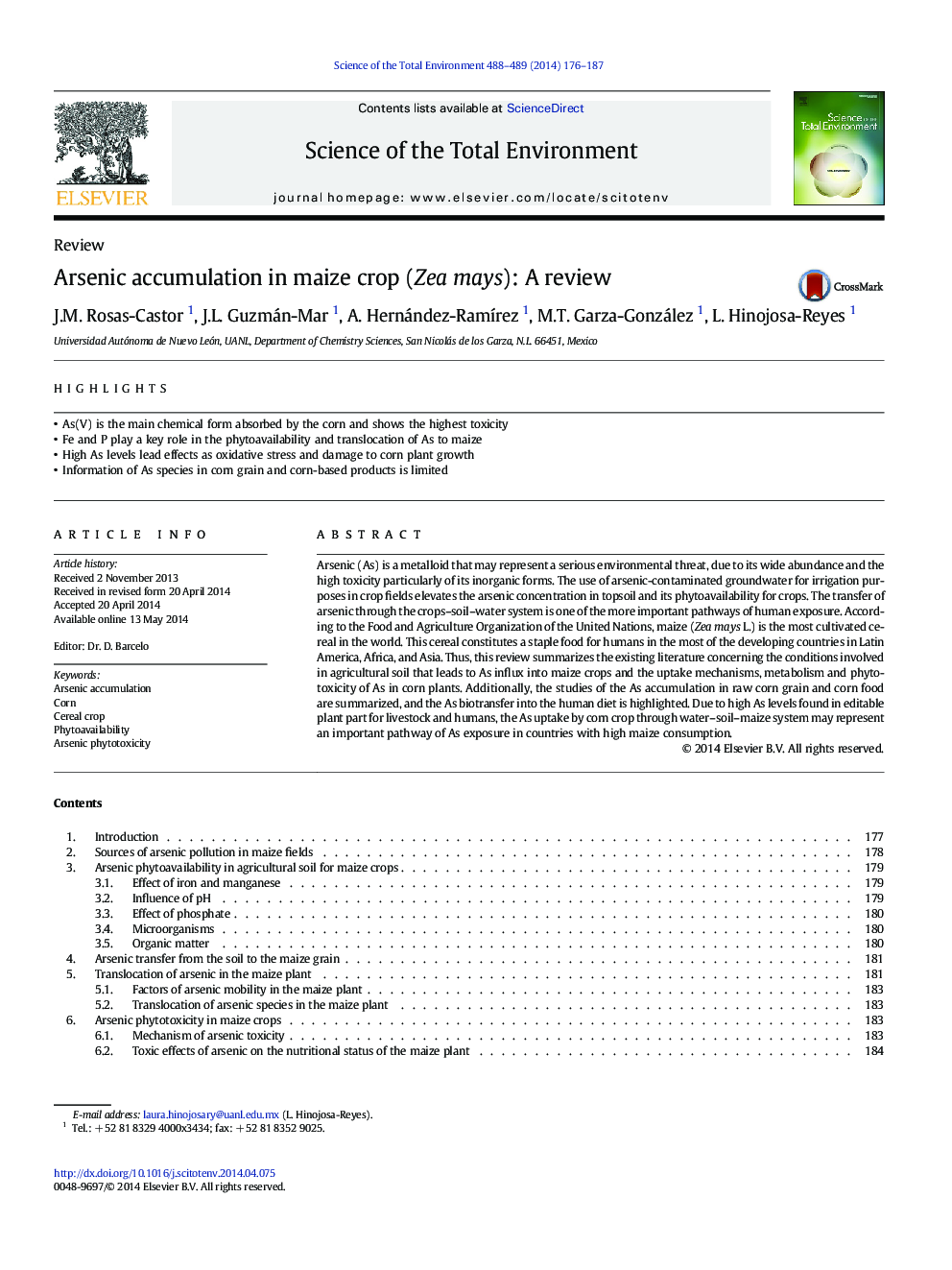| کد مقاله | کد نشریه | سال انتشار | مقاله انگلیسی | نسخه تمام متن |
|---|---|---|---|---|
| 6330152 | 1619781 | 2014 | 12 صفحه PDF | دانلود رایگان |

- As(V) is the main chemical form absorbed by the corn and shows the highest toxicity
- Fe and P play a key role in the phytoavailability and translocation of As to maize
- High As levels lead effects as oxidative stress and damage to corn plant growth
- Information of As species in corn grain and corn-based products is limited
Arsenic (As) is a metalloid that may represent a serious environmental threat, due to its wide abundance and the high toxicity particularly of its inorganic forms. The use of arsenic-contaminated groundwater for irrigation purposes in crop fields elevates the arsenic concentration in topsoil and its phytoavailability for crops. The transfer of arsenic through the crops-soil-water system is one of the more important pathways of human exposure. According to the Food and Agriculture Organization of the United Nations, maize (Zea mays L.) is the most cultivated cereal in the world. This cereal constitutes a staple food for humans in the most of the developing countries in Latin America, Africa, and Asia. Thus, this review summarizes the existing literature concerning the conditions involved in agricultural soil that leads to As influx into maize crops and the uptake mechanisms, metabolism and phytotoxicity of As in corn plants. Additionally, the studies of the As accumulation in raw corn grain and corn food are summarized, and the As biotransfer into the human diet is highlighted. Due to high As levels found in editable plant part for livestock and humans, the As uptake by corn crop through water-soil-maize system may represent an important pathway of As exposure in countries with high maize consumption.
Journal: Science of The Total Environment - Volumes 488â489, 1 August 2014, Pages 176-187